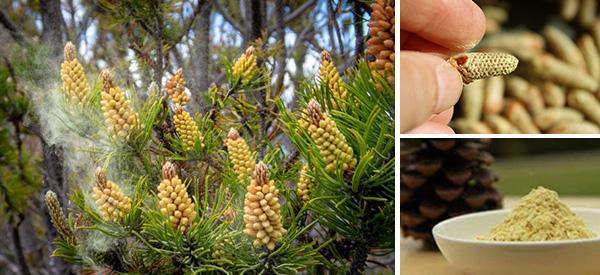
20 Benefits and Uses of Pine Pollen
Pine pollen is one of those under-appreciated substances that rarely get the recognition it deserves in the holistic space.
While we know that pine pollen has been used by our herbalist ancestors for over 2000 years, we have seen its popularity return as people take more and more mindful care of their health, away from pharmaceutical options.
So what exactly is pine pollen?
Pollen itself can be derived from many trees, flowering plants, and numerous grasses, which can be used in many ways to assist in some medical ailments and complaints.
Pollen comes from the male fertilizing elements of those trees, flowers, and grasses and has a powdery and grainy texture (if you were to nip it between your fingertips, it would leave a slight stain and feel a bit like coarse baby powder!).
Pine pollen is slightly different from pollen itself and can be derived from these actual pine sources, including:
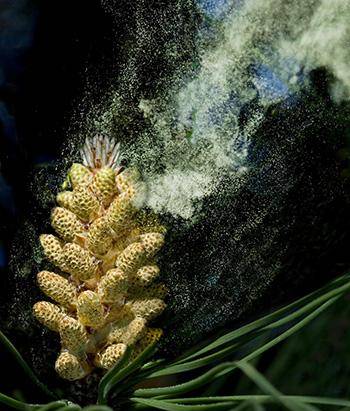
- Masson’s pine (Pinus massoniana) can be found in eastern Asia to central and southeastern China.
- Chinese red pine (Pinus tabulaeformis) The most common pine in china
- Scots pine/Scotch Pine/Baltic Pine (Pinus sylvestris), which is the most widespread European pine
Pine pollen is commonly found in herbal supplements.
It can be added to food to alleviate (some proven, and some by testimony!) many ailments and health irritations one may have, which we will look into next!
What Are The Best 10 Uses For Pine Pollen?
Here, we will look into the primary uses of pine pollen in everyday life and how it can help some aspects of health.
Of course, some of the uses might be so old in their formation that it becomes a health ritualization that has been passed down through generations as truth, but as research and science have developed over time.
We start to understand the actual health benefits that have been proven (or disproven, in some cases!), and we can begin to build an excellent portfolio for pine pollen as an addition to health.
So let’s have a look at its 10 potential health benefits for everyday health and wellness!
 1. Improving Levels Of Testosterone
1. Improving Levels Of Testosterone
Believe it or not, there is a high level of testosterone (a predominantly male hormone found in plants and humans) found in pine pollen.
However, this is yet to be proven or disproven in science.
2. Assist In Stress Recovery
Pine pollen is rich in phenylalanine which is linked to the production of dopamine in the brain, which we have a lot of when we feel happy.
When we have been stressed, it is essential to regulate our fine-tuned hormones back to their optimum levels, as pine pollen can assist in this happy place search.
3. Immune System Support
Pine pollen has many assets that can assist in improving the functions of the human immune system, which can be handy if you find you are suffering from many colds and viruses, primarily intestinal and digestive issues.
4. Natural Antiviral Addition
Pine pollen has a substance called Arabinogalactan, which can be found in roots and leaves, which is present in the human diet anyway.
Still, they are abundant in pine pollen, making it a perfect addition to providing antiviral assistance against things such as the common cold.
5. Hormone Production
Pine pollen has DHEA (dehydroepiandrosterone), which may help in the production of hormones, such as testosterone and estrogen, supporting the adrenal gland along a bit.
You may have low DHEA if you have a stressed lifestyle and the adrenal glands produce cortisol instead, so pine pollen has the potential to assist in a hormone rebalance.
 6. Healthy Libido Support
6. Healthy Libido Support
While most still find a low libido as a source of embarrassment, but it needn’t be. Pine pollen has DHEA, which is a natural balancer of the hormones estrogen and testosterone.
While pine pollen is reported to have a high testosterone level within its compounds, this may be a key in raising an otherwise low libido.
 7. Inflammatory Assistance
7. Inflammatory Assistance
Pine pollen has a high proportion of antioxidant compounds, which may assist in the reduction of inflammation and lower the prevalence of inflammatory responses in the body, such as joint pain, digestive complaints, and acne in the skin.
8. Antioxidant Support
The antioxidant support that taking pine pollen can give can also be helpful against the fight of free radical damage in the organs of the body, promoting healthy organ functions and repairing any previous free-radical damage.
9. Anti-aging properties
There are only so many times that healthy cells can reproduce, and this is the cause of many skin aging markers such as wrinkles, fine lines, and uneven skin tone. In this particular study, it was noted that pine pollen can slow down the rate and which skin cell regeneration can deplete and may slow and reduce the signs of aging in the skin.
10. May Reduce The Symptoms of Arthritis
Many people worldwide suffer from the pain and discomfort of arthritis on a daily basis, which is caused by the degeneration of the bony joints, often associated with getting older, or through certain kinds of medications and treatments.
Top 10 Ways To Take Pine Pollen
Now we have looked into some of the incredible things that taking pine pollen can help your everyday health and wellness, we need to now look at how we can incorporate pine pollen into our daily routines.
It is important to note that pine pollen cannot be consumed straight from the tree!
Pine pollen cannot be digested by the human body raw. It must be prepared for consumption before any attempt is made to introduce it into a diet.
1. Pre-Made Supplements
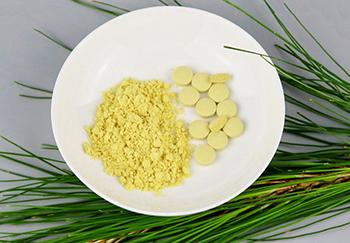
Pine pollen can be found in many supplements that are already made for us. These supplements can be found in any reputable health store or online.
Still, caution should be applied to the supplements claims and other ingredients before consumption.
2. Added To Baking
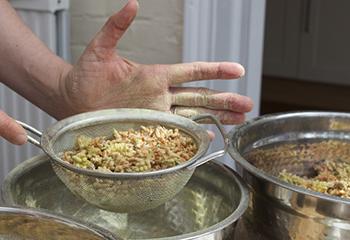 Pine pollen can be turned into a powdered format and added to flours and dry ingredients for baking.
Pine pollen can be turned into a powdered format and added to flours and dry ingredients for baking.
Caution should be applied with how much you put in your foodstuffs versus how much volume of the final product you have.
It is also something that needs mentioning if anyone else is going to eat the pine pollen products in case of allergies.
3. Pine Pollen Tincture
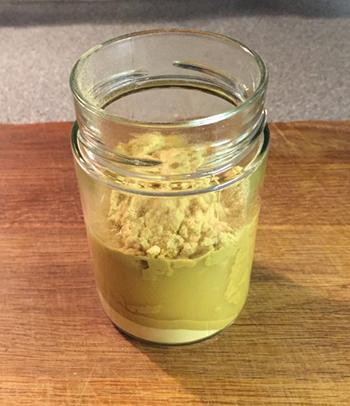 Tinctures are a superb way to get the correct elements of pine pollen in the right places when needed.
Tinctures are a superb way to get the correct elements of pine pollen in the right places when needed.
To prepare a tincture, Make a 1:6 strength solution by soaking one part of pine pollen into 6 parts solution, then evaporate four parts of the overall solution to get the 1:2 tincture.
4. Dehydrated Pine Pollen
You can use a dehydrated version of pine pollen in almost any dish.
Still, caution should be applied to ensure the pine pollen has been heated and mixed thoroughly to ensure it is safe to consume and the goodness is easily digested.
5. Pine Pollen Tea
Pine pollen is something that benefits from being heated to release all of the goodness within the pollen so it can be easily absorbed by the gut.
Allowing pine pollen powder to steep in hot water can be really good for you when drunk as tea.
6. In Savoury Dishes
Pine pollen powder can be sprinkled in almost any savory dish, including soups, stews, and sauces.
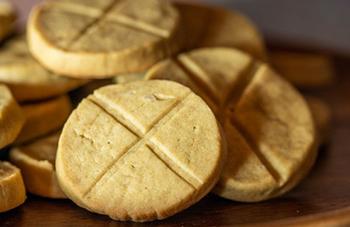
Be sure to use only the right amount for a correct dosage (see the bottom of the article for those!) to pop in your food.
7. In Sweet dishes
Of course, a small amount of pine pollen powder in sweet dishes can also be done.
This can make sweet dishes that use almost any ingredients to create a nutrition profile that is more on the superfood side.
8. Topical treatments
Pine pollen can be added to a topical ointment to improve healing and skin conditions such as acne and eczema. It is full of amino acids, which may benefit and improve some skin conditions.
9. Added to juices and smoothies
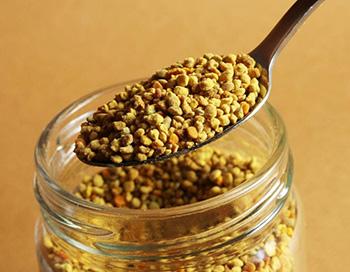 Adding pine pollen to a superfood juice or smoothie can increase the uptake of the pine pollen goodness, along with many other natural health benefits the other ingredients can give you.
Adding pine pollen to a superfood juice or smoothie can increase the uptake of the pine pollen goodness, along with many other natural health benefits the other ingredients can give you.
It is best to use pine pollen powder for this as it can be quickly mixed with the existing liquids.
10. Added to your morning coffee
Pine pollen can amp up the status of your morning coffee by placing a teaspoon of pine pollen powder in your cup, adding the correct amount of coffee, and adding your hot (but not boiling) water. Allow to steep for 2 minutes, stir and consume.
Related: Add This “Unusual Nutrient” to Coffee or Tea, to Effortlessly and Fully Empty Your Bowels Every Single Morning (Learn More)
Recommended Pine Pollen Dosages:
- Pine pollen powder: 1tsp (1.5g)
- Pine pollen tincture: 1ml, 2-3 times a day
Takeaway
Pine pollen is simply a tremendous all-around and natural ingredient that can support so many areas of your health and well-being.
It is an exceptionally diverse ingredient too and can be used in many areas of life, from taking it as a tincture to adding to your regular meals.
Although natural, caution should be applied to recommended dosages to not cause any adverse health effects from its consumption.
Be sure to prepare the pine pollen properly as it needs to be before consumption.
You may also like:
 The Legal Narcotic You Can Grow In Your Backyard (It’s Not Cannabis)
The Legal Narcotic You Can Grow In Your Backyard (It’s Not Cannabis)
I Stopped Spending Money At The Pharmacy By Growing These 10 Plants (Video)

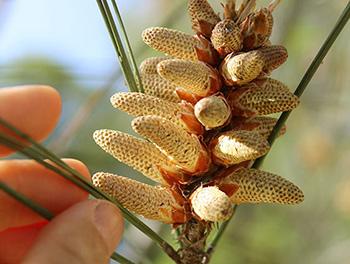 1. Improving Levels Of Testosterone
1. Improving Levels Of Testosterone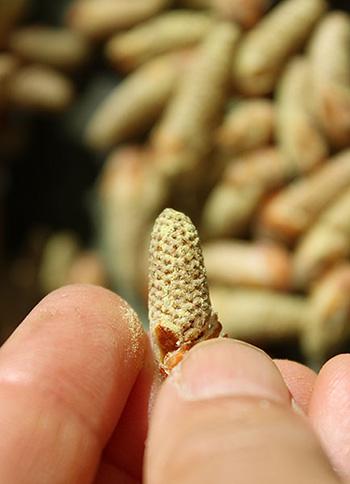
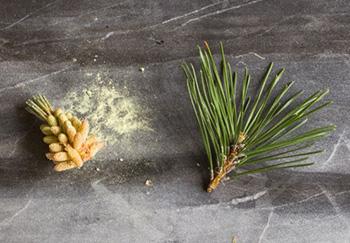 6. Healthy Libido Support
6. Healthy Libido Support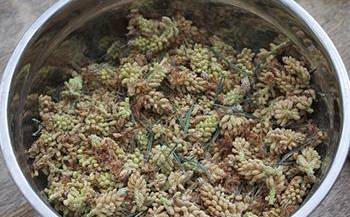 7. Inflammatory Assistance
7. Inflammatory Assistance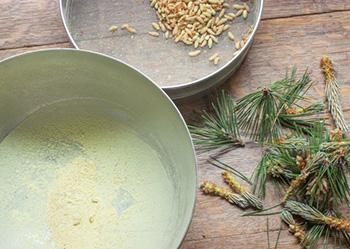
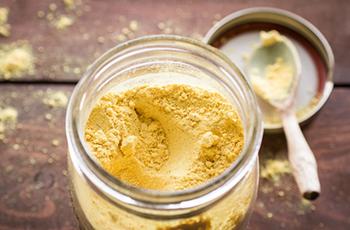
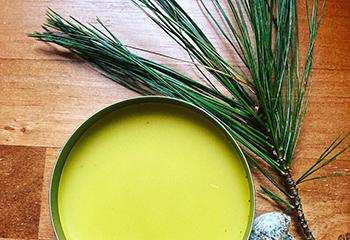
How, exactly does one “make” pine pollen? Method and a recipe would be very helpful!
I second that. As well as how to extract it.
Hi,
I think this video will answer your question:
https://www.youtube.com/watch?v=Ot9Eel5PskA
You can also find some interesting recipes here:
https://foragerchef.com/pine-pollen/
Many blessings and good health!
What about pine sources in the US? Or are the benefits only related to the three listed in the article?
Id like to know that too.
china is a bit off my places to travel to list. 🙂
Hi,
Pine pollen especially, has been used in Asia as a medicine for a very long time.
That’s why we mentioned in the article the Pine Trees from Asia, being the most common used for medicinal pine pollen.
However you can gather pollen from other species of Pine as well (genus Pinus).
There are many species of native pines in North America and unfortunately we cannot cover them all in a short article.
Here are the most common and valuable pines that are native to the United States and Canada.
– Eastern white pine (Pinus strobus)
– Western white pine (Pinus monticola)
– Sugar pine (Pinus lambertiana)
– Red pine (Pinus resinosa)
Just look for for male pine flowers yellow and plump, bursting with pollen.
Pine pollen is also sold in many health foods stores and online. It is usually sold in powder form, although there are also some liquid extracts and capsules on the market. Many brands combine pine pollen with other ingredients, so it is important to read the label before you buy.
Keep in mind that dietary supplements like pine pollen are unregulated by the U.S. Food and Drug Administration (FDA).
I hope this helps!
What are the differences in pollen between spruce and fir compared to pine? Are they interchangeable?
Great article. Thanks.
Hi Leona,
Thank you for reaching out to us.
Pollen itself can be derived from many trees and flowering plants. But pine pollen is the most commonly used for its medicinal properties.
There are not many studies available at the moment about the other tree’s pollen medicinal uses.
Many blessings and good health!
are there any North American pines that work for this? I see you only mention China pines, and I’d hate to attempt it with a toxic pollen!
Thanks!
I have read that Pine trees in the US are not suitable for this. We have tons of Loblolly pines and long leaf pines here. Are they useable?
Where are the replies to these comments? There are quite a few DANGER..don’t do this don ‘t do that….but no replies for the questions regarding!!!
I do appreciate this blog, HOWEVER it is severely lacking in many areas and to give partial information and then not track the questions for use is a blatant misuse of a blog!!
Hi Carol L,
We apologize for the delay.
Our team is not working on weekends, and sometimes it might take a couple of days to catch up with all the comments and requests.
Your feedback is very important to us. It means that we can better understand what we are doing well, and where there are areas where we need to make improvements.
Many blessings and good health!
Just re-read this: question: “It is important to note that pine pollen cannot be consumed straight from the tree!
Pine pollen cannot be digested by the human body raw. It must be prepared for consumption before any attempt is made to introduce it into a diet”
Just exactly HOW does one “PREPARE” the pollen for consumption? Cooking? boiling? heating? Please explain in detail…also, how do we know that the pre-made supplements aren’t just pine pollen encapsulated and not properly prepared? Again, details for articles that have warnings…it’s just plain common sense if you have warnings you have solutions or your readers can be harmed.
How long does it take to see improvement? I understand it’s individualized, but have you noticed any changes in your PSA levels.